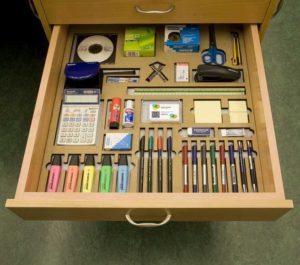“Pressure? There is no pressure in Test cricket. Real pressure is when you are flying a Mosquito with a Messerschmitt up your ar*e” said Keith Miller lover of music, cricketer and a World War II fighter pilot to boot, a man I wish I knew (from the many stories I hear about him). But being an athlete is not as easy as Miller made it out to be. In fact, it is one of the hardest life decisions a person can take. In addition to the fierce physical training and exhaustion, you have to learn to take hits below the belt and roll with the punches. This is apart from the risk that you carry of your career never taking off, or a rocking career nosediving after an injury. To add, there is intense competition, constant media scrutiny (personal and professional) and the looming threat of retirement before the average adult retirement age.
When I read that Ritika Phogat, all of 17 years, died by suicide and the suspicion was that she might have been upset over having lost the final of a state-level junior wrestling tournament by a single point, it broke my heart, as I’m sure it did others. It is hard enough being an Indian sportsperson, but being an Indian female sportsperson is even harder.
I grew up with PT Usha or Payyoli express as we knew her being the only role model in school who had qualified for the 1980 Olympics. I identified with her (she looked dark skinned and like me -was Indian) and wanted to be like her and I managed to make It to the district level 100 and 200metres. This is where I met my competitors. Girls who, unlike me, came from modest backgrounds and had only one single objective – to make it to the Nationals. I wore expensive athletic spikes, some of them were barefoot (at a time when we didn’t know that barefoot was actually a better option). While sports was a hobby for me, it was their whole and soul. It owned their bodies but more importantly their minds. They thought of nothing else. Of course I lost, but I came back feeling proud of participating and being told how amazing it was that I could be an “all rounder” who studied and played. All work and no play, made Jill a dull girl, and I was anything but. And – Of course they won. But, their win was micro-analyzed. What was their timing? Did they have a better timing last time? Does someone else in India have a better timing than them? Was there any unfairness from the referees?
My respect for athletes is immense. They live a life under constant pressure. Pressure is not the same as stress. As a psychologist I therefore cannot emphasize enough how important it is to train sports minds in what is to come i.e. “Pressure management” because pressure affects the brain. It can negatively impact split-second judgement and decision-making ability. This is also why some athletes perform worse under pressure and others train to perform the same under pressure as they would when not under pressure. The idea that athletes perform “better” under pressure, popularized by movies where you see some superheroic win at some poignant last moment, are few and far between. In fact they are so rare, you could probably pin them down to“luck.” Authors Hendrie Weisinger and Pawliw-Fri, in their book “Performance under pressure, the science of doing your best when it matters most” speak of pressure to perform as arising from various sources. For a young mind, they say the goal should be to lessen the injurious effects of this pressure on the mind, because one cannot really control sources of pressure.
Pressure management: The how
According to science, if you are training to be an athelete, you also need to be trained in what is called a “pressure mind shifts.” This involves doing away with the myth of being a “superhero” or of “rising to the occasion” last minute. This trying too hard negatively affects performance. Instead, in pressure management, the idea is to employ behavioural techniques to inoculate an athlete against pressure, much like you can inoculate yourself against infections by taking vaccinations. “Cognitive reframing” of an athletes internal dialogue is meticulously done by psychologists. They are also trained to not become defensive when criticized amongst other thing.
Who is most at risk for suicide?
A popular psychology book on suicide in professional and amateur athletes by David Lester and John Gunn details psychological strain in athletes. It highlights the attitude of “deliver or suffer” in tournaments and outlines the risk factors for suicide as being steroid or substance misuse, concussions or traumatic brain injury and psychiatric disorders. It also warns of the psychological effects of losing a game, dealing with social pressures, trolling and bad press, loneliness and strained relationships. Underlying all of this lies a stigma that can make it difficult for athletes to approach their coaches or teammates for help. Said one of my clients “What if the coach thinks I’m weak and not good enough. I won’t make the national team. I have worked so hard to get here. Years of no sleep, not even a bar of chocolate. It’s best I say nothing.” To add to the strain, he stressed on the fact that he had no friends outside of his competitive sports circle, he had lost his childhood because of constantly being on the field, he had missed school, he had missed birthdays and celebrations on account of putting sports first and he had to deal with the politics of competing. At 16, he had been seriously depressed after losing out on an opportunity and did not know whom to go to, to share his pain. He was convinced the decision taken against him was unfair. He started to lose weight, lose motivation, lose sleep and lose the will to live. His entire identity, as a sportsman, was being questioned as a result of this one loss. His parents were too busy making ends meet and driving him to and from practices, adding to his guilt of “failing them” as a son. What was he to do? Where was he to go? Would it further affect his ratings if he displayed any weakness?
Psychologists on sports teams
Just like the army employs mental health specialists who are trained for the mental and emotional well-being of Army soldiers (and not just their performance) it is important to have clinical psychologists on sports teams. In both cases confidentiality is of utmost importance. Educating coaches and teams to understand that it will not ruin a career to admit the need for help, but in fact, may better chances at staying in the game longer, is not just necessary – it is indispensable. It will not only avoid unnecessary deaths, but it might help to improve the quality of life of entire sports families.
Let us not blind-side the mental health of young sportspersons. Let us literally give them a “head start”





 Aaji and me (2019)
Aaji and me (2019)














